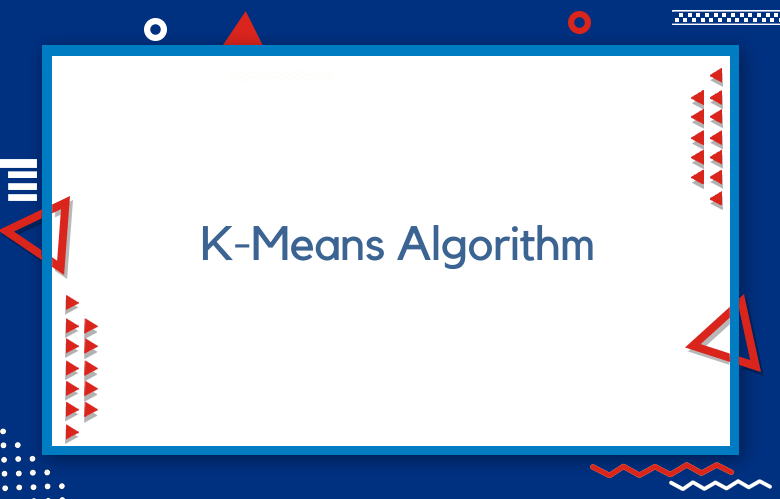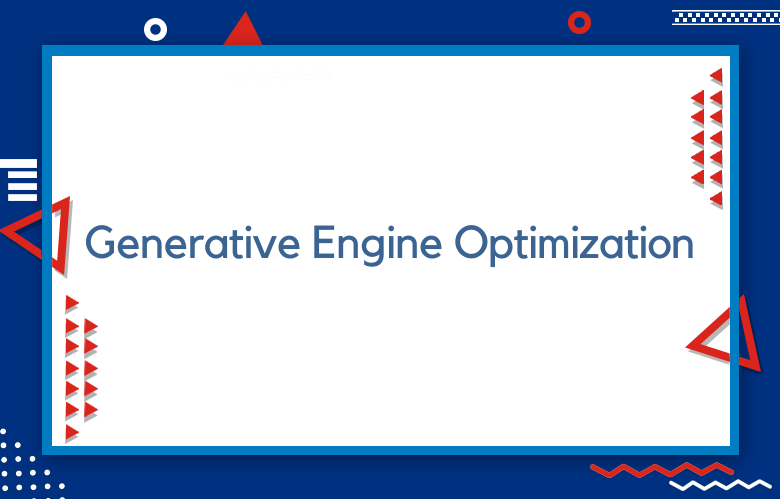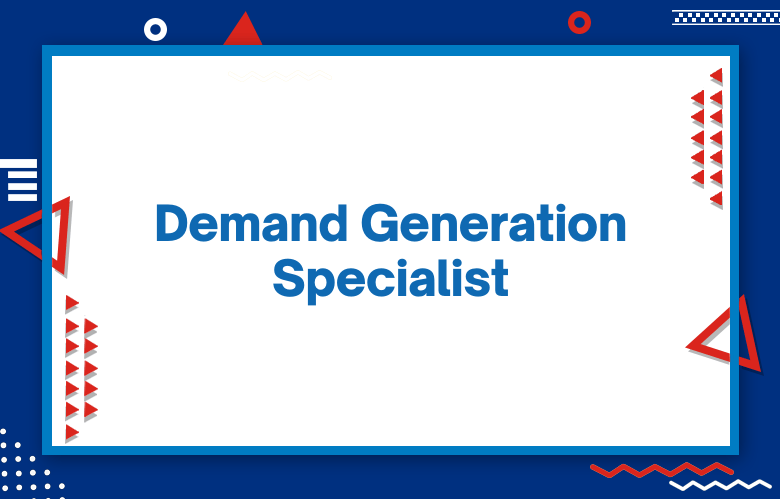How to use a K-Means Algorithm for Marketing Analytics

Likyou’re businesses; you’re always looking for ways to improve your marketing strategies and analytics. One approach that can be helpful is using a K-means algorithm. We’ll explain a K-means algorithm and how you can use it to improve your marketing analytics.
A K-Means algorithm is a great way to analyze marketing data. It can help you identify clusters of customers and understand their needs. This post will help you get a complete idea of using a K-Means algorithm to improve your marketing strategy.
What is a K-Means Algorithm?
The K-Means Algorithm is a supervised learning algorithm that clusters data into groups.
A K-means algorithm is a statistical method for clustering data. It’s used It’sdentify patterns in the set and assign each observation to one of the clusters.
A K-means clustering algorithm is a popular unsupervised learning method. It’s used It’sluster unlabeled data into groups based on their feature values.
A K-Means Algorithm is a method for clustering data. It’s an imitative algorithm that allows you to cluster points based on their proximity.
Stuart Lloyd invented a K-Means algorithm in 1964. The idea behind a K-means is to divide data into clusters based on the distance between data points and the centroid of that cluster.
A K-Means algorithm is a form of clustering. It’s best when you want to find groups within data.
The K-means algorithm is used for clustering data. The input to the K-means algorithm is a set of points in space and the number of desired clusters, e.g., it takes an array.
The K-Means Algorithm is a clustering algorithm that groups data points, known as clusters. A classic example of this is an SVM classifier.
Ways to Use K-Means Algorithm for Marketing Analytics
- K-means algorithm may not be required for marketing analytics because marketers will have access to the raw data and can conduct their analysis and possibly even their clusters without the need for collections generated by the algorithm to help them do the segmentation.
- Data mining technology will help businesses and corporations predict what consumers (consumers) will want and how consumers will act.
- The K-Nearest Neighbors algorithm must replace the K-Means clustering algorithm, the state-of-the-art algorithm of choice.
- Businesses will use predictive analytics to become better business strategists, choose the right products or services to offer, make the right pricing decisions, and determine the best time to introduce new products or services.
- Data from sensors attached to consumers’ bodies and vehicles will provide the raw data for algorithms like the K-Means Algorithm for marketing analytics.
- The K-means algorithm will be used everywhere to crunch large sets of data.
- Businesses won’t succeed with simple analytics that describe their data in the present. Instead, companies will need to rely on predictive analysis to make decisions about the future of their business. In the end, businesses won’t make wise decisions without predictive analytics.
- Companies and the data industry will use the K-means algorithm more often. This is the most valuable tool that can be used to optimize existing efforts, analyze data sets that can not be easily broken into a normal distribution, and increase ROI, maximizing customer experience and streamlining processes.
- K-Means will be one of the most common forms of marketing analytics. It is easy to implement and almost always reliable. This technique is non-parametric, so no “special” “inputs o” assumptions are needed.
- Businesses will analyze the vast amounts of data at their disposal, aiming for breakthroughs that yield a competitive advantage.
- Marketing analytics will be customized for every single consumer. It will provide the consumer with all the data they have ever offered, anonymizing it. We expect companies to monitor our collective mood and tailor their responses accordingly.
- Marketers will dig into the massive data that today’s today’s software generates and pull out valuable insights to create better strategies and better marketing programs. But, to effectively use the software, they’ll need business intelligence capabilities and powerful analytics. The k-Means algorithm is a clustering algorithm that can cluster many input data points into K distinct groups (called clusters).
- Marketing analysts will use computers to help sift through vast amounts of consumer data to help pinpoint potential customers and predict consumer behavior.
- The k-means algorithm will be applied to big data to gain actionable intelligence.
- Companies must decide their marketing mix and keep a particular program or product based on its value in the marketplace. A new algorithm is critical to making these decisions.
- K-Means will be used to make sense of the vast amount marketers are drowning in. This algorithm will ensure that consumers are reached only with messages that have been customized to them.
- The K-means algorithm may identify a specific audience segment using historical data to understand the target market better. The program would identify common attributes, such as income or age, and market directly to that audience, eliminating mass-market audiences.
- The K-means algorithm will have incredible computational speed, work with more extensive data sets, and efficiently manage the algorithms themselves.
- Companies will use the K-means data-mining algorithm to identify the market segments they want to serve.
- Businesses will capture the audience in real time and use the recommendation engine to guide consumers toward the right product and feature.
- Companies and organizations rely on intelligent algorithms to personalize the technology surrounding them. The adaptive environment is dynamic and non-stationary. The technology needs to adapt to the needs of users or consumers. The technology should learn from its usage patterns and customize its user experience. In this scenario, Machine Learning would be centralizing data and creating knowledge.
- Analysts will be required to analyze volumes of data and unstructured information. K-Means will allow them to find “tricks” in” the m “marketing data that may not be obvious or with traditional statistical tools. As a result, marketers can better target the right market at the right time with the right message –– resulting in more sales and successful marketing campaigns.
- The K-Means Clustering algorithm will continue to be helpful in problem-solving because it is a versatile yet straightforward technique, very responsive to changes in the data environment within which it is used, and produces valuable results with a minimum of preprocessing.
- Marketing companies will use the K-means algorithm in the future to interpret data for more effective marketing strategies. This differs from the current data analysis techniques because of the ability to cluster based on external information.
- The technology behind marketing algorithms such as K-Means will play an even more important role than it does today. The algorithm will move from being a machine behind the scenes to a front-and-center marketing tool for business.
- Much more personalization will occur. Customers will interact with products, brands, and companies using the Web, e-mail, social networks, cell phones, or other devices. This behavioral data, or clickstream data, will be used to optimize online experiences for the customer. For instance, the retailer might learn what things a customer browses on the Web but ultimately doesn’t. The retailer can then push advertisements from those items to the shopper via other media.
- The K-Means Algorithm will become an essential tool for mining transaction databases, searching through unstructured data, and measuring interaction effects on the Web.
- Clustering algorithms, such as K-means, will automatically determine which customers belong to the same cluster. This will be critical when companies want to develop sophisticated customer segments without hiring statisticians to compile complex segmentation algorithms.
- Marketers will not rely on website clickstream data as the sole source of information. Web users will have similar concerns, driving new technologies in this area. One of these is the development of new “anonymous” ways to “collect data, a tricky proposition.
- Machine Learning is becoming increasingly critical in solving significant marketing problems, for example, identifying the ideal marketing mix, maximizing the probability of winning sales promotions, and finding the perfect location for stores, among other things.
- A K-means algorithm will identify random clusters of consumers into different social classes by what they buy, not where they live. An algorithm will consider income, education, occupation, gender, age, and race and use that information to predict what brands a person buys.
- The marketing machine will serve customers with better efficiency. Undoubtedly, marketing will become intelligent to deliver more value to customers.
- The k-means algorithm would be made more efficient by possibly pre-computing metrics for clustering and loading them for similarity/dissimilarity analysis.
- Artificial intelligence technology may handle more data analysis than human analysts making sense of data. Advertisers may ask their machine to determine the optimum advertising campaign for their products and services.
- K-means algorithm will become even more critical for marketing analytics. At least, that’s thethat’snsus from various experts.
- The marketer can say more to the customer with fewer words through algorithms designed to predict customer behavior. The increased power of Artificial Intelligence will help the marketer learn more about the customer than ever before.
- There will be a greater focus on studying which marketing actions have the desired result and which do not have the desired effect. Instead of just focusing on the activities with the desired result, companies will also focus on reducing the actions that do not have the desired result.
- Marketing analytics will be about predictive analytics. The goal of marketing analytics 20 years from now will be to predict the optimal set of product characteristics to support a company’s business model and create new offerings in real time to address changing customer needs and preferences. This will require technologies that can integrate databases, social media, clickstream behavior, purchase behavior, and other sources of information. It will require machine learning and other advanced technologies and approaches.
- K-means clustering algorithms may still be used to discover unique groups, such as market segments, an audience, individuals, or social groups, for example, for census purposes.
- The K-Means clustering algorithm will be used more widely in the world of marketing analytics, and it will be used to group customers, products, or projects into collections of similar items.
- The K-means algorithm will identify consumer data clusters associated with market segments.
- With advancements to the K-means clustering algorithm, marketers will have even more tools at their disposal in their quest to find influential consumer groups.
- Data analysts may implement the K-Means algorithm that automates the discovery of data patterns and predictive models for out-of-sample datasets.
- By monitoring the consumer interaction with the brand, marketing analytics will predict how likely a customer might be to buy something. One of the keys is that marketing research must identify the correct algorithm or set of algorithms or models to capture and predict future consumer behavior.
- An organization’s activities will be evaluated by measuring the customer, considering the entire customer journey, and examining individual customer behavior. By doing so, an organization can address the customer at the right time and place based on the customer’s expectations. Through technology and data, organizations will create the right customer experience.
- Statistical techniques — or machine learning algorithms — will streamline the marketing world’s veworld’slicated creative and media processes. This approach should be considered an essential part of a holistic marketing toolkit.
- Marketers will leverage terabytes and petabytes of customer behavior data to understand customers’ end-to-end consumption journey. Predictive analytics and artificial intelligence will help marketers interact with customers.
- K-means clustering algorithms will be more sophisticated and faster than current versions. They will include “looping,” “”str” aiming,” and new “approaches to handling extensive and much larger databases, up to 100 Terabytes.
- K-means predictive algorithm can recommend company mix changes based on customers’ likely reactions.
- Marketing uses data to develop a new way of segmenting customers by creating a new algorithm to segment clients likely to buy their products.
Conclusion:
So, what do you think? We’re not. We’re to lie. This complicated algorithm has many steps and nuances that most people can intuitively grasp. Fortunately, we have the knowledge and experience in marketing analytics consulting to guide you through this process successfully!
If you need help figuring out how your customers behave or if they might be interested in particular products based on their browsing behavior, don’t hesitate to reach out today.
Call: +91 9848321284
Email: [email protected]



